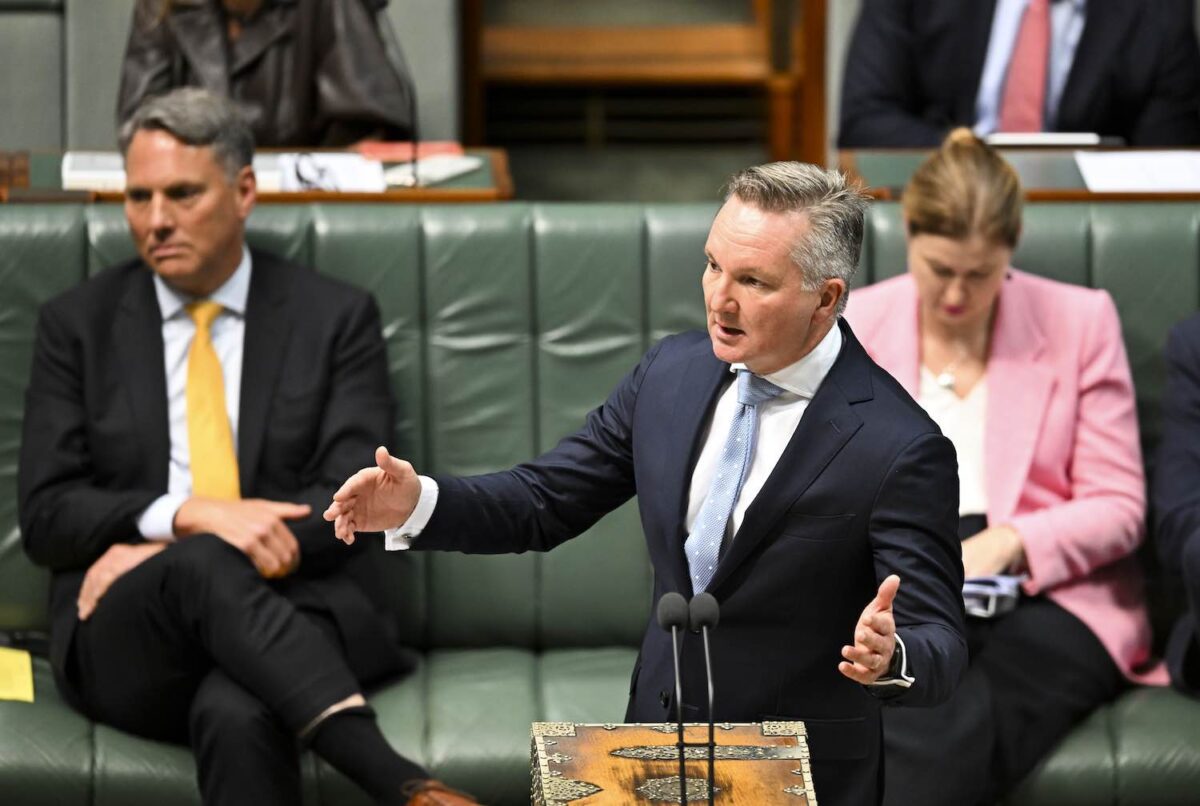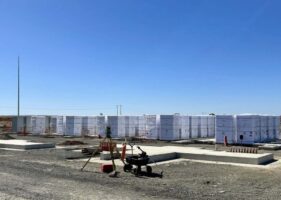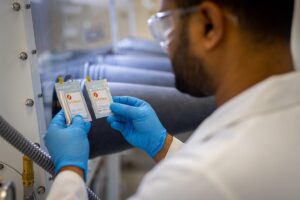The federal Labor government has effectively abandoned the long standing renewable energy target and will take a hands-on policy approach through a series of auctions to secure 32GW of new wind, solar and storage capacity to meet its ambitious 82 per cent renewable energy target for 2030.
In possibly the most important energy policy shift in more than a decade, federal energy minister Chris Bowen has decided that the RET is no longer fit for purpose, and auctions – like those successfully used in the ACT and NSW – will be the best mechanism to get new projects under way.
The federal government is under pressure to accelerate the rollout of renewables and storage, not just to meet its own stated target of 82 per cent renewables by 2030, but to allow the more than 20 GW of ageing and polluting coal fired power stations to be ushered out of the system.
Many in the renewables industry have lamented the slow-down in investment, and had supported an extension of the RET, from its planned expiry date to 2040 or longer, and even to add storage to the mix.
But Bowen’s advisors believe the RET mechanism now offers a poor price signal because new wind and solar projects are sending prices down to negative territory, and say tenders that provide minimum revenue guarantees and price caps offer the best protection for consumers.
Costs hidden from consumers
And, by bringing the costs of incentives on to the federal government’s balance sheet, the government can avoid the cost being passed on directly to consumers, which will be particularly important in the current high inflation environment and with the energy bill shock that is already affecting households.
The federal government says it will seek 9GW of new disptchable capacity and 23GW of new wind and solar generation in the tenders, starting with a first auction in April next year, and to be followed by a new auction every six months out to 2027.
That date is important because the government says that to meet its target it will have to contract enough wind capacity by 2026 and solar capacity by 2027 to ensure that projects are built in time.
The announcement was made just ahead of a meeting of state and federal energy ministers, and before Bowen is due to fly out to the COP28 climate conference in the UAE, where Australia will be under pressure to increase its emissions reduction targets, and to show that its current targets can actually be met.
Supercharge the grid
Bowen says the program will “supercharge” available power in the energy grid, delivering the long-term reliable, affordable and low-emissions energy system Australians deserve as our grid changes.
He pointed to the failure of the previous Coalition government, which had failed to secure any new dispacthable capacity in its 10 years of government.
“This dangerous and irresponsible approach– including their failure to deliver a capacity scheme – is one of the reasons Australia’s grid could face a difficult summer,” he said.
Bowen’s Capacity Investment Scheme will be ramped up from 6 GW of storage to more than 9 GW of dispatchable capacity, and will add 23GW of variable capacity, or wind and solar. It will only be eligible to projects not regarded as “committed” as of November 23.
The auctions will be managed in conjunction with the states, and around 18 GW of this capacity will be arranged under bilateral agreements.
The first of these agreements delivered spectacular results on Wednesday, when Bowen and NSW energy minister Penny Sharpe announced more than 1GW of battery storage capacity for NSW to help replace Eraring, and at potentially minimal cost to consumers.
A further 600 MW of storage options is already under why for Victoria and South Australia.
Floor and ceiling caps
The mechanism to be adopted by the federal government, however, will be slightly different, and rather than offering just a guaranteed minimum revenue stream to help obtain lower cost debt, will provide both revenue floors and a ceiling. And, of course, it will include wind and solar projects.
This cap on the mechanism means that any “super profits” from the projects – in the case of high wholesale pries, for instance, will be returned to the government and consumers. This has worked well to shield ACT consumers from the recent price hikes driven by the soaring cost of fossil fuels.
However, the federal government says it will not be releasing details of the prices negotiated in the auctions – due to commercial in confidence – and the costs will be buried in budget papers. This in contrast to the practice in the ACT, which pioneered a similar mechanism, and Victoria and other states.
The federal government says it will also consider other barriers to renewable investment such as workforce and supply chain constraints, but did not go into fine details of how this would be approached.
Simon Corbell, the CEO of CEIG, which represents many big renewable energy and storage investors, and a former energy minister for the ACT that pioneered the reverse auction model as it pursued 100 per cent renewable power, said it will unlock significant new investment.
“Without stronger revenue predictability it has been difficult for many project owners to secure the debt and equity commitments needed to bring projects to financial close,” Corbell said in a statement.
Investors are happy
“It has also made it harder for large Australian superannuation funds to support investment in renewable energy at the scale needed for the energy transition.
“CEIG especially welcomes the measures to deliver regular auctions at 6 monthly intervals until 2027, this is the longer term certainty investors, and the energy grid needs, to achieve a timely transition.
“Improving planning and other regulatory assessment pathways is also vital for investors. To this end it is pleasing to see the leadership of the Commonwealth in making action by the states on these issues a condition of the new expanded Capacity Investment Scheme support.”
The CEIG also welcome the bilateral deals that will require state to meet reliability criteria, and improve the approvals and permitting processes.
“Improving planning and other regulatory assessment pathways is also vital for investors,” Corbell said. “To this end it is pleasing to see the leadership of the Commonwealth in making action by the states on these issues a condition of the new expanded Capacity Investment Scheme support.”
Details please
Kane Thornton, the CEO of the Clean Energy Council, says the move is welcome given that investment in new renewables has been declining since the RET target was met in 2020, and because of higher project costs, permitting delays and a congested grid.
But he said the industry was keen to see the fine details of the proposal, and said that household and business – and the ability to co-ordinate and encourage consumer energy resources – should not be forgotten
“While renewable energy remains the lowest cost form of new generation, there is a clear role for government to facilitate the enormous levels of investment needed to transition our energy system,” Thornton said.
“We look forward to working closely with the federal government on the detailed design of the contracting mechanism to ensure it is effective and delivers the new investment and lower power prices that are expected.
“It’s crucial that any new policy provides increased certainty to investors and the enormous private sector capital and capability that will be essential to Australia becoming a clean energy superpower.
“We also continue to advocate for further support for households and businesses to adopt rooftop solar and household batteries that can reduce power bills and further address cost of living challenges.”
A red letter day
Chief executive of the Smart Energy Council, John Grimes, congratulated the Albanese government on the “impressive announcement” and urged all governments to sign up to the funding agreements and to get started on the renewables auctions as soon as possible.
“This is Australia’s biggest ever renewable energy announcement – a red letter day for renewables,” Grimes said.
“This is a massive win for Australia – cheaper power bills for all Australians and jobs and investment in regional communities right across the country.
“Today’s announcement gives the industry the confidence to invest and build, confidence for workers and investors, for regional communities and confidence for all Australians that power bills will continue to go down.”










